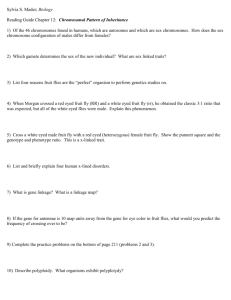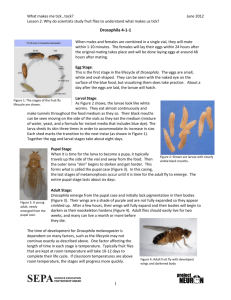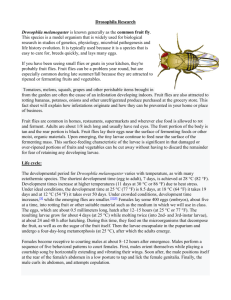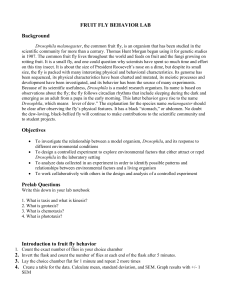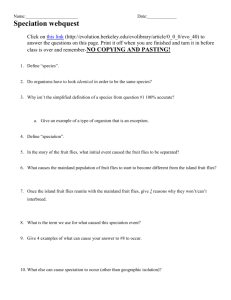Mexican Fruit Fly
advertisement
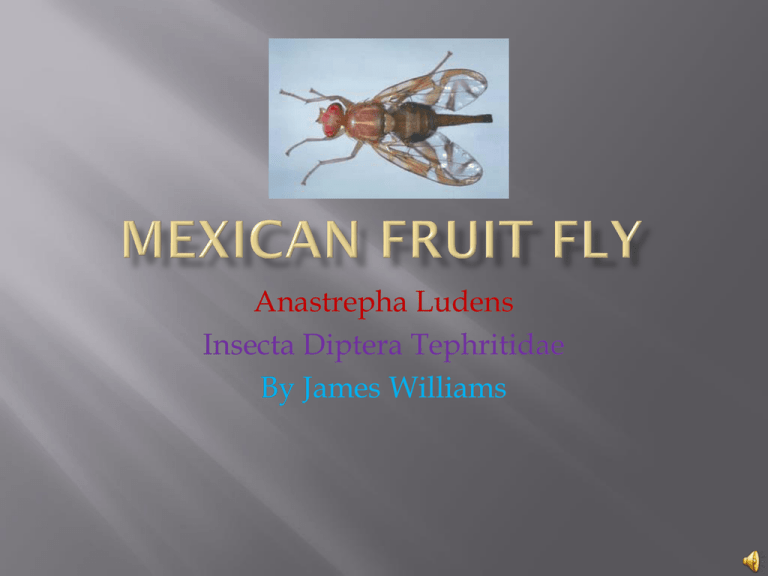
Anastrepha Ludens Insecta Diptera Tephritidae By James Williams Originates from Mexico, Central America, and from areas as far south as Costa Rica Introduced in 1927 to Western Mexico, Texas, Arizona, and Southern California accidentally Transported by exporting fruits from Mexico across the border and into the U.S. It can now be found in all the areas mentioned earlier and parts of Florida People affect the flies by killing them. There is no first hand affect from the flies to the humans A second hand affect; eating the fruit bitten by the flies causes dietary restriction Less fruit is able to be eaten or sold to other countries Effects on animals? Same as on humans. Dietary restriction. There is no first hand affect Sun Fruit Tree Mexican Fruit Fly Bats Decomposers No known predator of the fruit fly besides any animal that eats a fruit that is home to the fly larvae. No specific predator The ecological balance has shifted for animals that eat the fruit. The animals’ populations have decreased. Does not affect humans because of medical advancements Reasons for success; the climate is near the same in Texas and other new areas as it is in Mexico and its other homelands. There is an excess of fruit in the new habitats of the fly. As I stated earlier, there is no predator of the fruit fly To attempt to control the fruit fly, when the bug reaches pest status, exterminators set up traps to catch and kill the bugs Options to control growth; let the insects overpopulate and destroy the fruit, or continue using the traps to control the population The trade-offs of these decisions; if you let them live without control, most fruit is inedible. When you control the population, the government is spending money





